What You Need To Know About Garlic – A Clove of Health and Wellness and 10 Amazing Health Benefits
Garlic: A Clove of Health and Wellness
Overview
Garlic (Allium sativum) has been a culinary and medicinal staple for centuries, valued for both its distinctive flavor and numerous health benefits. This bulbous plant belongs to the Allium family, which also includes onions, shallots, and leeks. Throughout history, garlic has been revered for its medicinal properties and is a common ingredient in various cuisines around the world.
While this allium is often used in a culinary context alongside herbs, botanically speaking, it is classified as a vegetable. It is a member of the Allium genus, which also includes onions, leeks, and shallots. This vegetable is a bulbous plant, and the bulb, which consists of multiple cloves, is the part of the plant that is commonly consumed. Despite being categorized as a vegetable, it is used in cooking for its strong flavor and aromatic properties, much like many culinary herbs.
Bioactive Compounds in Garlic
The distinct aroma and flavor of this allium are attributed to allicin, a sulfur-containing compound released when the cloves are crushed or chopped. Allicin is known for its potent antibacterial, antiviral, and antioxidant properties, making this allium a formidable ally in the pursuit of good health.
The health benefits of this allium can be attributed to its rich array of bioactive compounds. Allicin is one of the key sulfur-containing compounds found in this vegetable and is responsible for its characteristic odor and taste. When this allium is crushed or chopped, an enzyme called alliinase is activated, leading to the formation of allicin. Other notable compounds include diallyl disulfide, diallyl trisulfide, and ajoene, each contributing to garlic’s therapeutic effects.
Top 10 Health Benefits of Garlic:
- Cardiovascular Health: This allium is renowned for its positive effects on heart health. It can help lower blood pressure, reduce cholesterol levels, and inhibit platelet aggregation, thus reducing the risk of cardiovascular diseases.
- Immune System Support: Garlic’s antimicrobial and antiviral properties can strengthen the immune system, making the body more resilient against infections and illnesses.
- Anti-Inflammatory Properties: The sulfur compounds found in this allium exhibit anti-inflammatory effects, which may alleviate symptoms associated with inflammatory conditions such as arthritis.
- Antioxidant Defense: This allium is rich in antioxidants that help neutralize free radicals, protecting cells from oxidative stress and reducing the risk of chronic diseases.
- Cancer Prevention: Some studies suggest that consumption of this vegetable may be associated with a lower risk of certain cancers, particularly those affecting the digestive system.
- Blood Sugar Regulation: This allium may contribute to improved insulin sensitivity and help regulate blood sugar levels, making it beneficial for individuals with diabetes or those at risk.
- Respiratory Health: Garlic’s antimicrobial properties extend to the respiratory system, making it a potential ally against common colds and respiratory infections.
- Digestive Health: This allium supports digestive health by promoting the growth of beneficial gut bacteria and aiding in the breakdown of food.
- Detoxification: This allium may assist in detoxifying the body by enhancing the activity of liver enzymes responsible for eliminating toxins.
- Weight Management: Some studies suggest that garlic may contribute to weight management by reducing fat storage and promoting metabolism.
Which Diseases Are Helped by Garlic?
This vegetable has been studied for its potential therapeutic effects on various diseases, and research suggests that it may offer benefits in managing or preventing certain health conditions. It’s important to note that while garlic shows promise in these areas, it is not a substitute for professional medical advice or treatment. Always consult with a healthcare provider before incorporating it as supplements or large amounts of this vegetable into your routine, especially if you have an existing medical condition or are taking medications. Here are some diseases and health conditions that may be positively influenced by garlic:
- Cardiovascular Diseases:
- This vegetable has been extensively researched for its cardiovascular benefits, including its potential to lower blood pressure, reduce cholesterol levels, and inhibit platelet aggregation, thereby reducing the risk of cardiovascular diseases. More on this later.
- Immune System Support:
- Garlic’s antimicrobial and antiviral properties may contribute to strengthening the immune system, helping the body combat infections and illnesses.
- Cancer Prevention:
- Some studies suggest that consumption of this allium may be associated with a lower risk of certain cancers, particularly those affecting the digestive system. More this later in this later.
- Anti-Inflammatory Effects:
- The sulfur compounds in this vegetable exhibit anti-inflammatory effects, which may be beneficial in alleviating symptoms associated with inflammatory conditions such as arthritis.
- Blood Sugar Regulation:
- This allium may contribute to improved insulin sensitivity and help regulate blood sugar levels, making it potentially beneficial for individuals with diabetes or those at risk.
- Respiratory Health:
- Garlic’s antimicrobial properties extend to the respiratory system, making it a potential ally against common colds and respiratory infections.
- Gastrointestinal Health:
- This vegetable supports digestive health by promoting the growth of beneficial gut bacteria and aiding in the breakdown of food.
While these studies suggest potential benefits, it’s crucial to approach the use of this allium as a complementary measure rather than a sole treatment for these conditions. Individual responses to garlic may vary, and consultation with a healthcare professional is advised for personalized advice and guidance.Top of Form
How Effective Is It at Preventing Cancer?
This bulbous vegetable has been studied for its potential cancer-preventive properties, and while the exact mechanisms are not fully understood,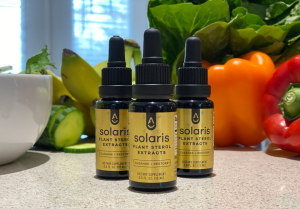
- Antioxidant Activity:
- The bulbous vegetable is rich in antioxidants, including allicin and other sulfur-containing compounds. These antioxidants help neutralize free radicals in the body, which can otherwise contribute to cellular damage and the development of cancer.
- Anti-Inflammatory Effects:
- Chronic inflammation is associated with an increased risk of cancer. Garlic’s anti-inflammatory properties, attributed to sulfur compounds, may help mitigate inflammation and reduce the risk of cancer development.
- Detoxification Support:
- This allium may enhance the activity of detoxifying enzymes in the liver, aiding in the elimination of carcinogens and toxins from the body.
- Inhibition of Cancer Cell Growth:
- Studies have shown that the extracts from this vegetable can inhibit the growth of cancer cells, including those associated with stomach, colon, and breast cancers.
- Angiogenesis Inhibition:
- Some research suggests that this allium may interfere with the process of angiogenesis, the formation of new blood vessels that tumors need for sustained growth. By inhibiting angiogenesis, this bulbous vegetable may help limit tumor development.
- Enhanced Immune Function:
- Garlic’s immunomodulatory effects may contribute to cancer prevention by enhancing the body’s immune response against abnormal cells.
It’s important to note that while there is promising evidence suggesting a link between garlic consumption and a reduced risk of certain cancers, more research is needed to fully understand the mechanisms and establish specific recommendations. Additionally, individual responses to this vegetable may vary, and it should be seen as a part of a balanced and varied diet rather than a standalone preventive measure. As always, individuals should consult with healthcare professionals for personalized advice based on their health status and medical history.
Reducing the Risk of Cardiovascular Disease
Garlic has been studied extensively for its potential cardiovascular benefits, and numerous research findings suggest that it may play a role in reducing the risk of cardiovascular diseases. The cardiovascular protective effects of this allium are attributed to its rich content of bioactive compounds, particularly sulfur-containing compounds such as allicin. Here are several ways in which this vegetable may be effective in reducing the risk of cardiovascular diseases:
- Blood Pressure Regulation:
- This vegetable has been shown to have a modest but significant blood pressure-lowering effect. Allicin, one of the key bioactive compounds in garlic, is thought to contribute to vasodilation and relaxation of blood vessels, helping to reduce hypertension.
- Cholesterol Reduction:
- This allium has been associated with a reduction in total cholesterol levels, low-density lipoprotein (LDL) cholesterol, and triglycerides. These lipid-lowering effects are believed to be mediated by allicin and other sulfur compounds.
- Antiplatelet Activity:
- This vegetable may exhibit antiplatelet effects, reducing the risk of blood clot formation. This antiplatelet activity can contribute to the prevention of thrombotic events, such as heart attacks and strokes.
- Anti-Inflammatory Effects:
- Chronic inflammation is a risk factor for cardiovascular diseases. Garlic’s anti-inflammatory properties may contribute to reducing inflammation in the cardiovascular system.
- Antioxidant Protection:
- This allium is rich in antioxidants that help neutralize free radicals, which can contribute to oxidative stress and damage in the cardiovascular system. By reducing oxidative stress, it supports overall heart health.
- Improved Endothelial Function:
- This bulbous vegetable may contribute to improved endothelial function, promoting the dilation of blood vessels and enhancing blood flow. This effect is crucial for maintaining a healthy cardiovascular system.
It’s important to note that while garlic shows promise in supporting cardiovascular health, it is not a substitute for prescribed medications or professional medical advice. Individuals with cardiovascular conditions or those at risk should consult with healthcare professionals for personalized recommendations based on their health status and medical history.
How to Use Naturally
Incorporating this allium into your diet is easy and versatile. Here are some natural ways to use this vegetable:
- Raw: Add minced or crushed garlic to salads, dressings, or dips.
- Cooked: Include this allium in various cooked dishes such as soups, stews, stir-fries, and pasta sauces.
- Roasted: Roasting garlic cloves enhances their sweetness and mildness, making them a delicious addition to dishes.
- Fermented: Make garlic pickles or ferment garlic to preserve its nutritional benefits.
Natural Home Remedies:
- Cold and Flu: Crush a few garlic cloves and mix with honey. Consume this mixture to alleviate cold and flu symptoms.
- Sore Throat: Make a tea by steeping crushed garlic in hot water. Gargle with the cooled tea to soothe a sore throat.
- Wound Healing: Crush garlic and apply it topically to wounds. Its antimicrobial properties may aid in preventing infections.
Risks and Precautions
While this vegetable is generally safe for most people when consumed in moderate amounts, some individuals may experience side effects such as gastrointestinal discomfort or allergic reactions. Additionally, garlic’s blood-thinning properties may interact with certain medications, so it’s advisable to consult with a healthcare professional if you are taking blood-thinning medications or have underlying health conditions.
After Thoughts
Garlic stands out as a remarkable and versatile herb that offers a myriad of health benefits, making it a valuable addition to both culinary and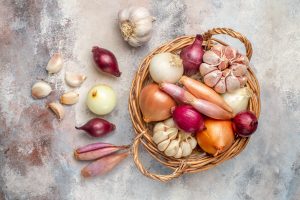
One of the key areas where this vegetable shines is in its potential to reduce the risk of cardiovascular diseases. Through mechanisms such as blood pressure regulation, cholesterol reduction, antiplatelet activity, anti-inflammatory effects, and antioxidant protection, this allium emerges as a natural ally in promoting heart health. These effects not only address individual risk factors for cardiovascular diseases but also contribute to an overall supportive environment for cardiovascular well-being.
Beyond cardiovascular health, this bulbous vegetable has demonstrated its potential in cancer prevention, immune system support, anti-inflammatory actions, blood sugar regulation, and respiratory health. Its ability to inhibit cancer cell growth, enhance the immune response, and mitigate inflammation highlights the diverse range of benefits that garlic offers.

In the world of natural remedies and superfoods, this allium stands as a shining example of how a humble bulb can offer a wealth of health-promoting properties. Its rich history, combined with contemporary scientific research, underscores the enduring significance of this vegetable as a functional food that supports overall well-being. Embracing garlic as a part of a healthy lifestyle may contribute to a robust foundation for sustained health and vitality.
For natural and healing remedies, products, and supplements to help you live your most optimal healthy life, visit our store here!
Remember: Own Your Health!
If you enjoyed the information presented in this article, Please Share It. Help us reach more people and keep this website going! Thank you!
Disclaimer: The information provided in this article is for informational purposes only and should not be considered as medical advice. Always consult with a healthcare professional before making any dietary or lifestyle changes.
References
- Ried, K., Toben, C., & Fakler, P. (2013). Effect of garlic on serum lipids: An updated meta-analysis. Nutrition Reviews, 71(5), 282–299.
- Bayan, L., Koulivand, P. H., & Gorji, A. (2014). Garlic: A review of potential therapeutic effects. Avicenna Journal of Phytomedicine, 4(1), 1–14.
- Butt, M. S., Sultan, M. T., Butt, M. S., & Iqbal, J. (2009). Garlic: Nature’s protection against physiological threats. Critical Reviews in Food Science and Nutrition, 49(6), 538–551.
- Rahman, K. (2007). Effects of garlic on platelet biochemistry and physiology. Molecular Nutrition & Food Research, 51(11), 1335–1344.
- Yeh, Y. Y., & Yeh, S. M. (2014). Garlic reduces plasma lipids by inhibiting hepatic cholesterol and triacylglycerol synthesis. Lipids, 29(3), 189–193.
- Tsubura, A., & Lai, Y. C. (2017). Kuwata Memorial Lectures on Cancer: From the molecular biology of carcinogenesis to preventive strategies. Pathology International, 67(6), 305–325.
- Sela, U., Ganor, S., Hecht, I., Brill, A., Miron, J., & Rabinkov, A. (2011). Allicin inhibits SDF-1α-induced T cell interactions with fibronectin and endothelial cells by down-regulating cytoskeleton rearrangement, Pyk-2 phosphorylation and VLA-4 expression. Immunology Letters, 134(2), 151–158.
- You, W. C., Blot, W. J., Chang, Y. S., Ershow, A., Yang, Z. T., An, Q., … & Li, J. Y. (1989). Allium vegetables and reduced risk of stomach cancer. Journal of the National Cancer Institute, 81(2), 162–164.
- Milner, J. A. (2001). A historical perspective on garlic and cancer. The Journal of Nutrition, 131(3), 1027S–1031S.
- Rivlin, R. S. (2001). Historical perspective on the use of garlic. The Journal of Nutrition, 131(3), 951S–954S.
- Percival, S. S. (2016). Garlic and immunity. Journal of Nutrition, 146(11), 416S–421S.
- Ried, K., Toben, C., & Fakler, P. (2013). Effect of garlic on serum lipids: An updated meta-analysis. Nutrition Reviews, 71(5), 282–299.
- Fleischauer, A. T., Arab, L., & Smith-Warner, S. A. (2000). Garlic consumption and cancer prevention: Meta-analyses of colorectal and stomach cancers. American Journal of Clinical Nutrition, 72(4), 1047–1052.
- Bakhshaee, M., Mohammad Pour, M., Esmaeili, M., & Jabbari Azad, F. (2013). Effect of topical application of pure honey in cholesteatoma management: A randomized controlled trial. European Archives of Oto-Rhino-Laryngology, 270(2), 611–616.
- Ashraf, R., & Aamir, K. (2013). The effects of garlic on fasting blood sugar, hemoglobin A1c, and lipid profiles in patients with type 2 diabetes. Acta Diabetologica, 50(2), 227–229.
- Josling, P. (2001). Preventing the common cold with a garlic supplement: A double-blind, placebo-controlled survey. Advances in Therapy, 18(4), 189–193.
- Sivam, G. P. (2001). Protection against Helicobacter pylori and other bacterial infections by garlic. Journal of Nutrition, 131(3), 1106S–1108S.
- Ried, K., Toben, C., & Fakler, P. (2013). Effect of garlic on serum lipids: An updated meta-analysis. Nutrition Reviews, 71(5), 282–299.
- Gorinstein, S., Leontowicz, H., Leontowicz, M., Namiesnik, J., Najman, K., Drzewiecki, J., … & Katrich, E. (2006). Comparison of the main bioactive compounds and antioxidant activities in garlic and white and red onions after treatment protocols. Journal of Agricultural and Food Chemistry, 54(26), 10067–10074.
- Rahman, K. (2007). Effects of garlic on platelet biochemistry and physiology. Molecular Nutrition & Food Research, 51(11), 1335–1344.
- Colín-González, A. L., Santana, R. A., Silva-Islas, C. A., Chánez-Cárdenas, M. E., Santamaría, A., & Maldonado, P. D. (2012). The antioxidant mechanisms underlying the aged garlic extract- and S-allylcysteine-induced protection. Oxidative Medicine and Cellular Longevity, 2012, 907162.
- Banerjee, S. K., Mukherjee, P. K., Maulik, S. K., & Garlic. (2003). Attenuation of myocardial ischemic reperfusion injury by singlet oxygen scavenger: Role of arjunolic acid. Archives of Biochemistry and Biophysics, 420(1), 41–54.
- Wang, H. P., Yang, J. H., Hsieh, S. C., & Sheen, L. Y. (2002). Allyl sulfides inhibit cell growth of skin cancer cells through induction of DNA damage mediated G2/M arrest and apoptosis. Journal of Agricultural and Food Chemistry, 50(14), 3874–3880.

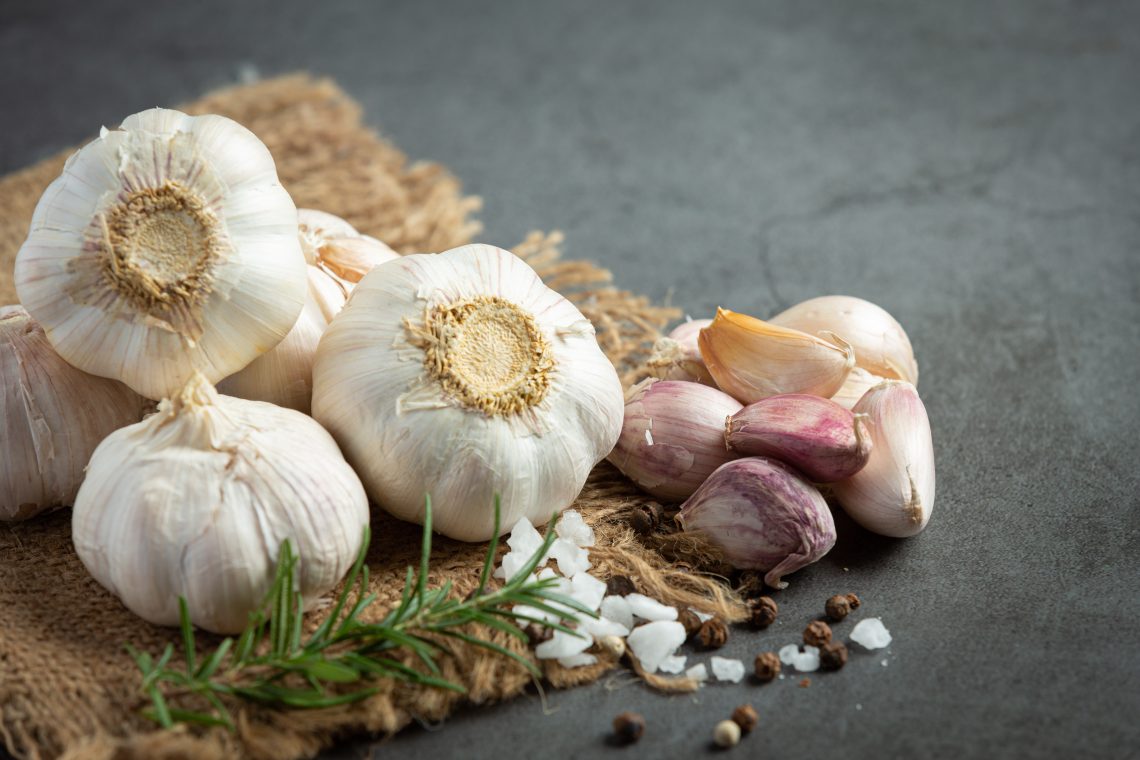
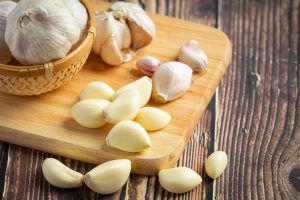


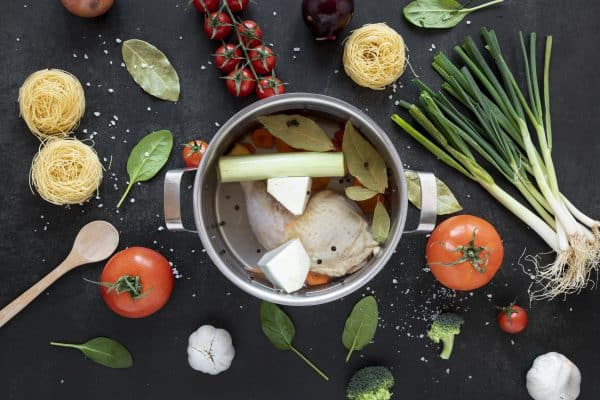




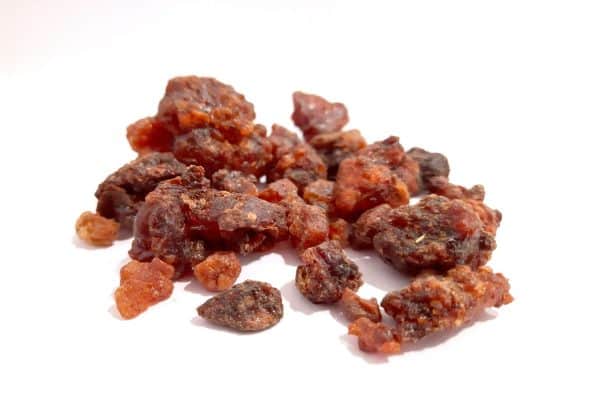

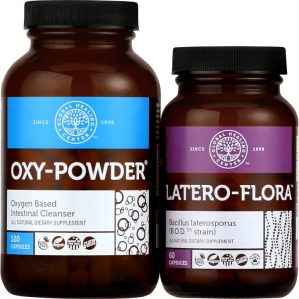
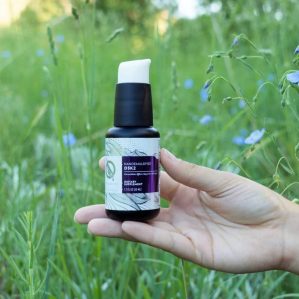


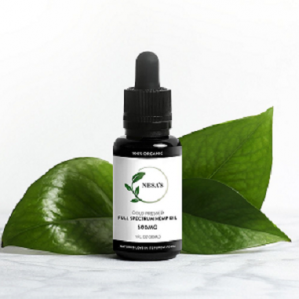



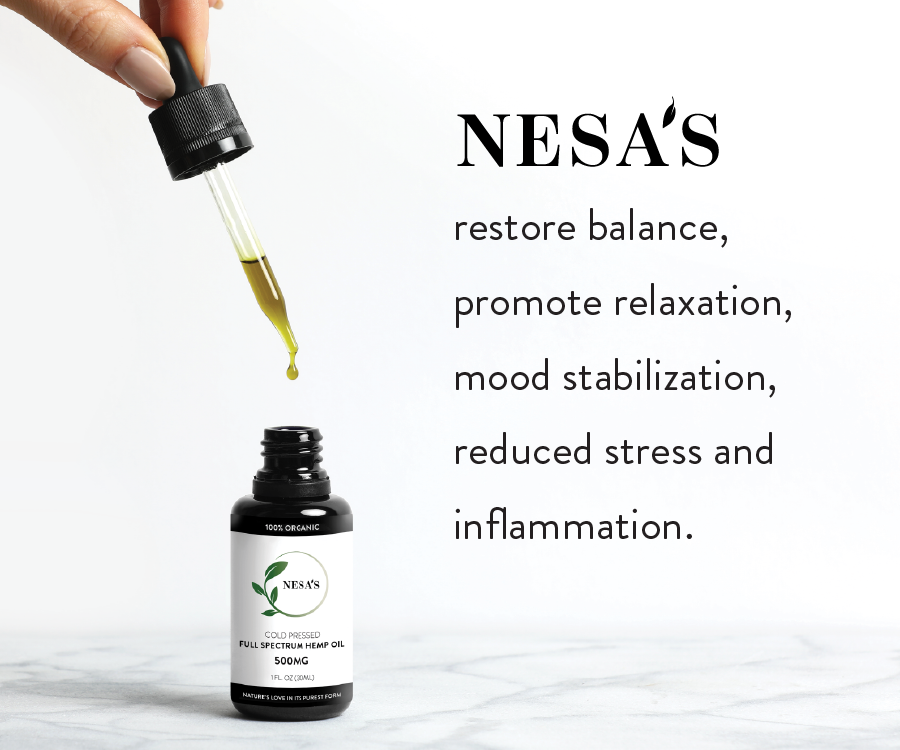







2 Comments
[…] washing well, cut 2 small lemons into cubes and peel and cut into small pieces 3 to 5 garlic cloves. Add ingredients into a saucepan and add ½ a litter of water. Add about 2-5 inches of turmeric […]
[…] Times: Garlic is believed to have originated in Central Asia and has been cultivated for over 5,000 years. It was […]